The placement of grab bars can vary depending on factors such as the specific needs and preferences of the individual, the available mounting locations, and the configuration of the walls. While there are universal standards for grab bar placement in public housing and facilities, residential grab bar placement is more flexible and can be customized to suit the unique combination of structural, functional, and psychological factors in a home.

It is important to assess these factors and choose an effective grab bar placement strategy that ensures safety and meets the individual's specific requirements. When it comes to installing grab bars in residential settings, grab bar installation specialists often need to come up with creative and practical solutions to accommodate the unique physical characteristics and limitations of each client, as well as factors such as the condition of the walls and floors. They also have to consider various individual and structural constraints to ensure the grab bars are placed in the most effective and safe manner.
When installing grab bars, it is important to consider the type of wall and the available anchoring options. If the wall is made of wood, the grab bar can be mounted directly into wooden studs or backing behind the wallboard or tile. For concrete or cinder block walls, anchors can be used to securely mount the grab bar. However, in cases where the interior walls are framed with galvanized steel studs, alternative anchoring methods must be used. These alternative solutions are necessary when retrofitting grab bars in residential homes where wood studs may not be easily accessible. There are various types of anchoring devices available on the market to accommodate these situations. It is crucial to ensure that there is enough space within the hollow area behind the wall for the chosen anchoring device to function effectively.
Vertical Grab Bar Placement
To improve safety and assistance in the shower or tub, we often install a small vertical grab bar at the entrance. This is because many people struggle with maintaining their balance when entering or exiting the shower. The area around the shower entrance sees more movement than the bathing area itself, making it a critical area to enhance for safety. Stepping over a small lip or ledge can also increase fear and difficulty, especially when bearing weight on a wet or slippery surface. To address these concerns, we use a vertically placed entrance grab bar that provides a more efficient and mechanically advantageous hand grip. This grab bar can be adjusted to accommodate individuals of different heights, ensuring a suitable grip for everyone.
When it comes to grab bar placement, a smaller grab bar that is vertically oriented, such as a 12, 16, or 18-inch bar, is typically sufficient at the entry point of the bathing area. This provides a secure handle for stability when entering or exiting, which is much safer than relying on unstable bathroom fixtures, glass doors, or towel bars. When it comes to grab bar placement, we typically recommend using a 16 or 18-inch bar at the entrance or exit point. This size provides better vertical coverage compared to a shorter bar. However, in cases where there are significant height differences among family members, we may opt for a longer vertical grab bar, such as a 24-inch one. Additionally, if our clients need to transfer to and from a wheelchair and require a more extensive gripping surface, we often install an extended entrance grab bar that offers a greater length.
When it comes to the placement of grab bars, it is important to consider the orientation and features of the bars. Vertical grab bars can be equipped with enhanced gripping features like the wUndergrip, ultra-peened Gator-Grip finish, Eurogrip finish, or Slip-Tek finish to address concerns of hand slippage. These features provide added security and stability for individuals using the grab bars. When it comes to installing grab bars in the bathroom, it is important to consider their placement for optimal functionality. To ensure ease of use when entering or exiting the shower or tub, it is recommended to position the grab bars not too far from the outer edge of the bathing area. In particular, the vertical grab bar is found to be ideal for providing a secure hand placement during these movements.
Horizontal Grab Bar Placement
When it comes to grab bar placement, horizontal positioning offers better coverage in the horizontal plane. This is particularly beneficial in situations where there is a lot of movement and the individual may face both forward and backward within the bathing environment. By placing the grab bar horizontally, it provides a handhold at a consistent height, which can be more accommodating to individuals of different heights compared to diagonal or vertical placement.
Horizontal grab bars offer a wider coverage area from side to side, providing increased support for individuals. However, one drawback of horizontal grab bar placement is that it may not offer as much vertical coverage compared to other placement options. If you wish to utilize the studs for anchoring, a grab bar that is multiple 16 inches (i.e., 16, 32, 48) will often work. In many cases but not always, the studs that sit behind the wall are 16 inches apart on center. On occasion, we encounter stud spacings of 12 or 24 inches. With many homes and condos fabricated with thin-walled steel studs, we find that alternate anchoring solutions are needed to provide an economically feasible means of providing a bath safety upgrade. Tearing out and replacing / reinforcing shower walls would be cost-prohibitive. Some of our favorite alternative anchoring solutions are the snap-toggle, flip-toggle, and alligators anchors. It is important to use quality stainless steel screws and drill clean round holes that are absolutely the anchors' right diameter. Frictional solid-state anchors such as the Alligator anchor require a very precise hole, and minute variances in the drill diameter can often have a tremendous effect on the anchors' ability to be effective. Not all 5/16 drill bits are the same diameter - they will often vary depending upon the brand selected.
Diagonal Grab Bar Placement
When it comes to grab bar placement, there are pros and cons to using a diagonal placement strategy. If you want to anchor the grab bar using studs, you can mount it diagonally between them. However, if you can't find the studs or if the desired mounting location doesn't align with the stud locations, there are alternative anchoring solutions available. These solutions can be used at one or both ends of the grab bar. It's important to consider the condition of the wall, as anchoring devices may not be suitable for walls that are in poor repair.
When it comes to grab bar placement, there are different options to consider. A sloping grab bar is a great choice as it allows individuals of different heights to easily access the bar at different gripping heights. This is particularly useful for couples with varying heights. Additionally, a diagonal grab bar puts our hand and wrist in a more natural and functional position, reducing stress on the wrists. It is also beneficial for those who prefer facing one direction in the shower. This type of positioning is especially helpful for individuals who need assistance going from sitting to standing and vice versa. Similar to the vertical grab bar, the angled grab bar can accommodate individuals of different heights. On the other hand, a horizontal grab bar allows the user to face both forward and backward, but its functionality is limited to a fixed height.
Grab Bar Placement at Toilet
When it comes to placing grab bars around the toilet, there are specific guidelines that must be followed in public facilities and housing. These guidelines dictate the height, dimensions, and location of the grab bars. However, in residential settings, these specifications may not always be feasible due to limited wall space, bathroom layout, and other factors. In these cases, the placement of grab bars must be customized to meet the individual's specific needs, taking into account the condition of the walls and the configuration of the bathroom. Grab bars can be placed horizontally, vertically, or diagonally beside the toilet, and in some cases, they may be placed directly in front of the commode to provide additional support when standing. To give you an idea of how grab bars can be placed in different bathroom layouts, we have compiled a small gallery of images showcasing various examples of grab bar placement that offer functional solutions tailored to individual needs.
What is the Actual Length of a Grab Bar?
When determining the length of a grab bar, it is important to measure the distance between the centers of the flanges. For example, a 16-inch grab bar would have a total length of 19 inches (16 inches + 3 inches for the circular flanges). Similarly, a 24-inch grab bar would have a total length of 27 inches (24 inches + 3 inches). This measurement accounts for the space occupied by the flanges on either side of the grab bar.
The Decision to Have Grab Bars Installed
When it comes to ensuring bathroom safety and assistance, the placement of grab bars is crucial in residential settings. There are several factors to consider, especially when there are existing barriers that individuals at risk need to overcome. Making the decision to install grab bars, bath safety rails, or handicap rails is not always an easy one, but it is an important step towards ensuring safety and accessibility in the bathroom.
When it comes to installing grab bars, there are often concerns from consumers regarding factors such as the finish, size, or placement of the bars. However, it is important to prioritize the actual safety and assistive benefits that grab bars provide. If these initial concerns are not effectively addressed by the installer, the individual at risk may object to having grab bars installed, leaving them vulnerable to potentially devastating falls. In addition to providing safety and assistance, the simple addition of grab bars can also greatly reduce apprehension and anxiety.
Grab bar placement is an important consideration for individuals of all ages, not just the elderly or disabled. Even healthy and active individuals can benefit from the added safety and stability that grab bars provide in slippery or unsafe bath or shower environments. It is common for active individuals to underestimate the risk of falls and be unprepared for unexpected accidents. Therefore, it is crucial to emphasize that one is never too young to have grab bars installed for added safety and peace of mind.
When it comes to placing grab bars in the shower, there are several factors to consider. In larger showers or situations where more coverage is needed, it is common to install additional grab bars in different locations within the shower. This ensures that there are multiple points of support for individuals who may need assistance or stability while showering. By strategically placing grab bars, it can help enhance safety and accessibility in the bathroom.
When installing grab bars, it is important to take into account various factors such as the condition of the walls, potential hidden hazards like plumbing and wiring, the presence of pocket doors, and the overall functionality and appearance of the installation. The installer must carefully consider all these factors to ensure a safe and effective placement of the grab bars.




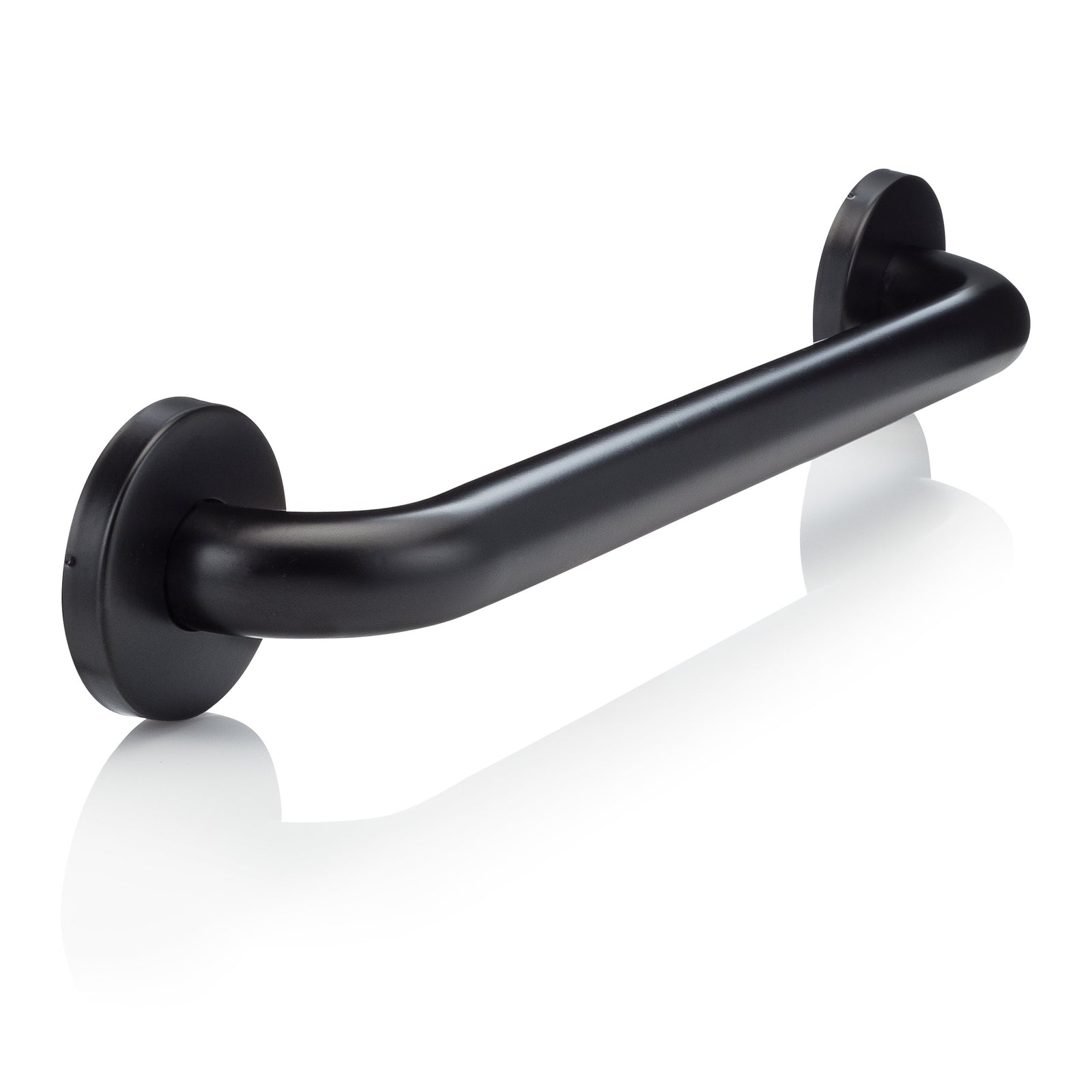
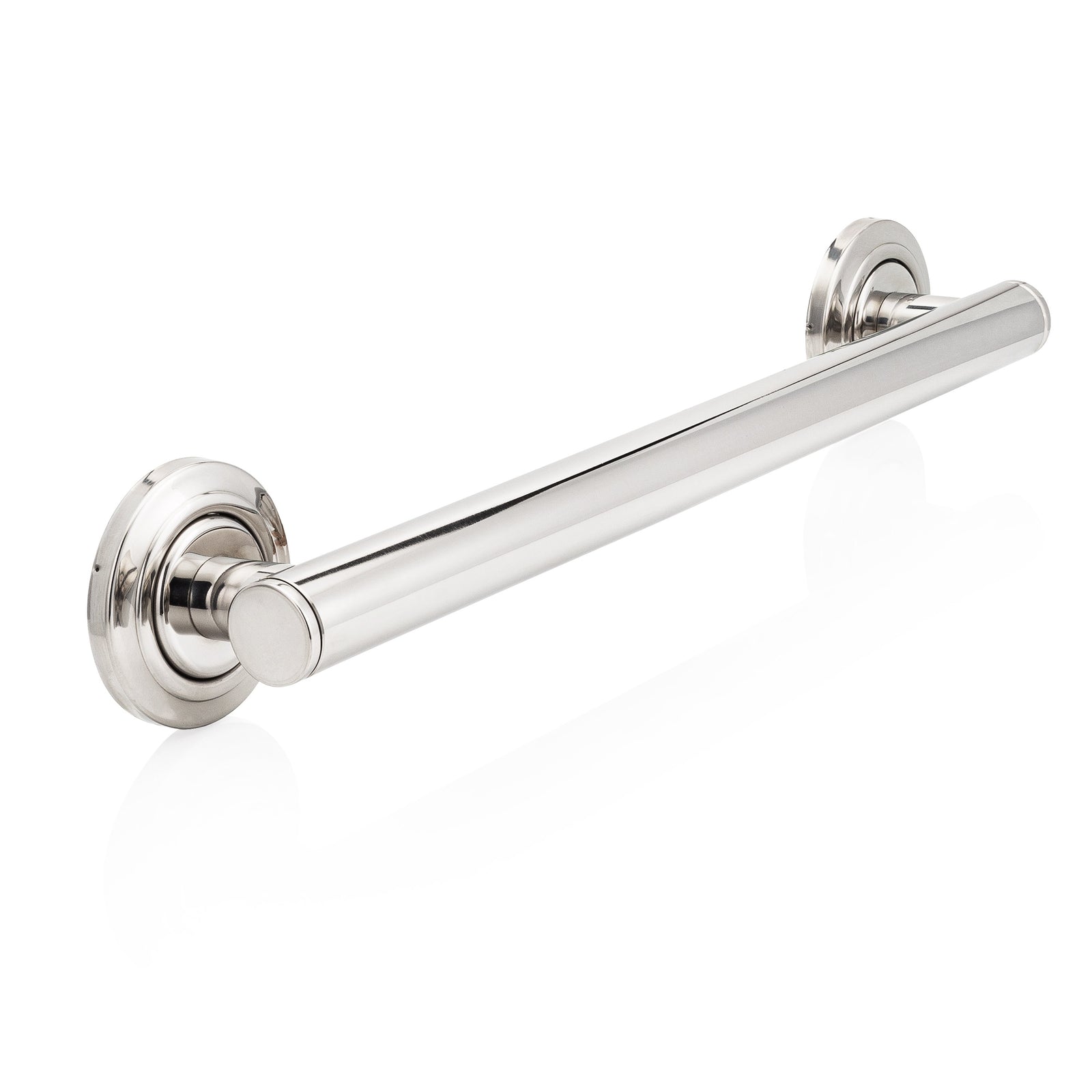
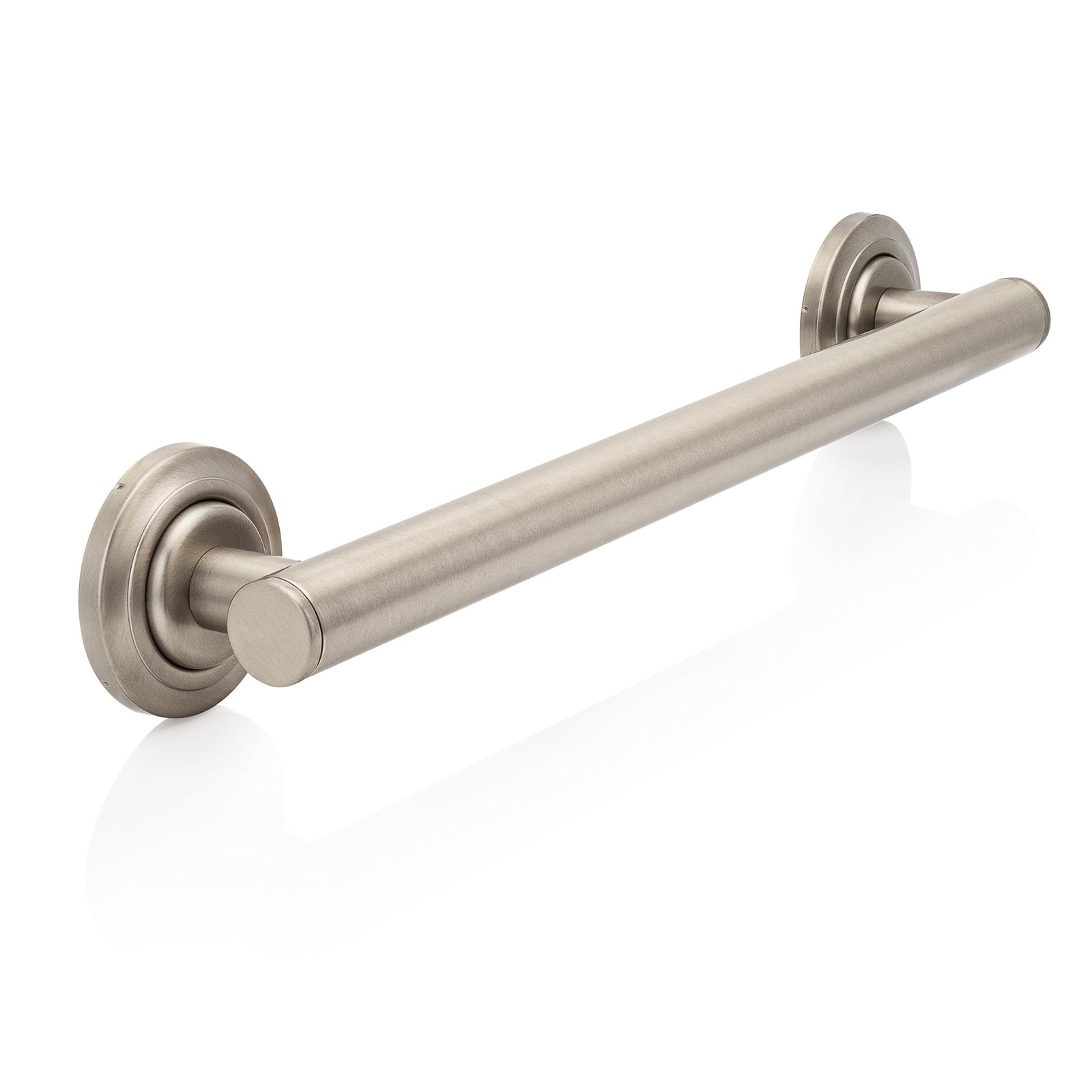

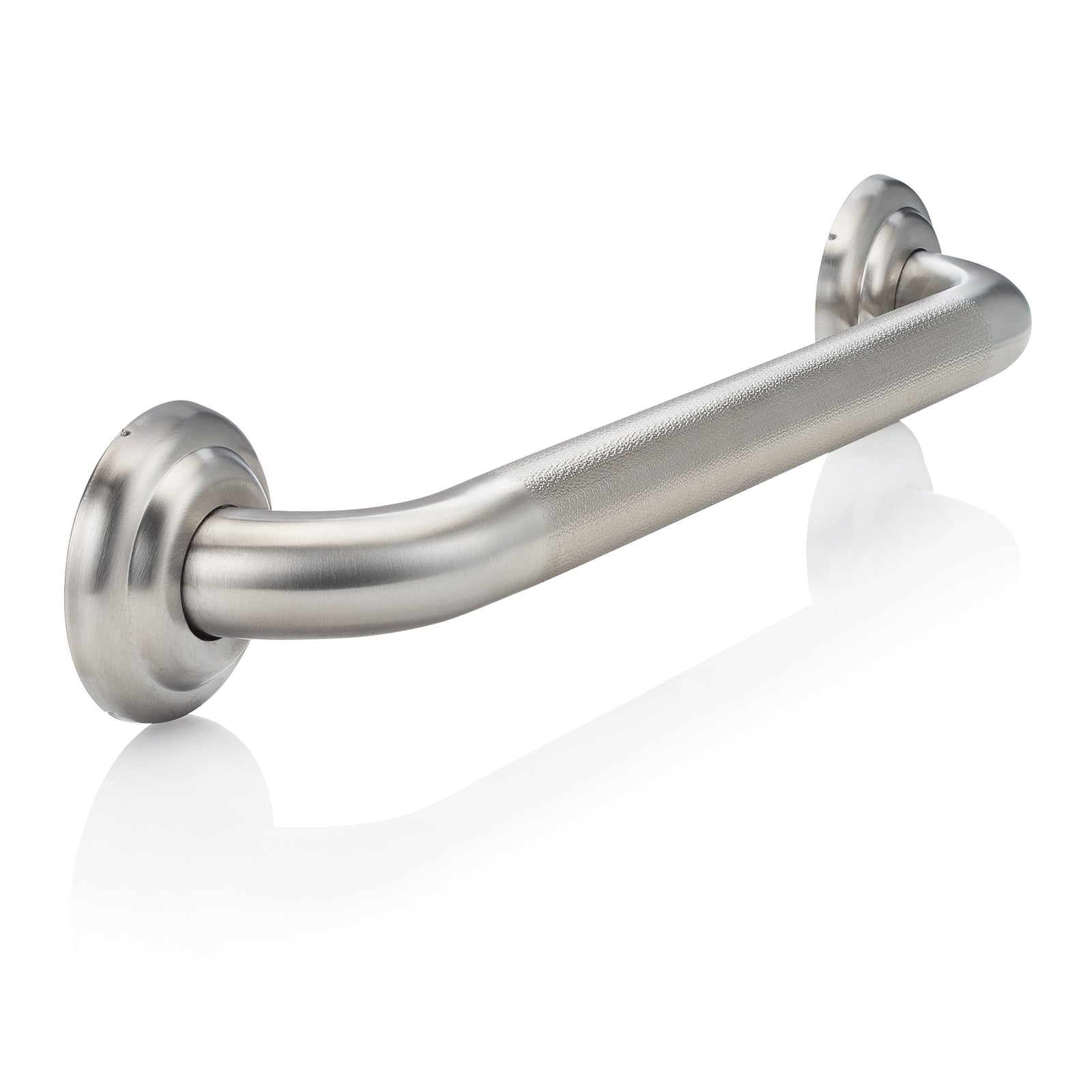
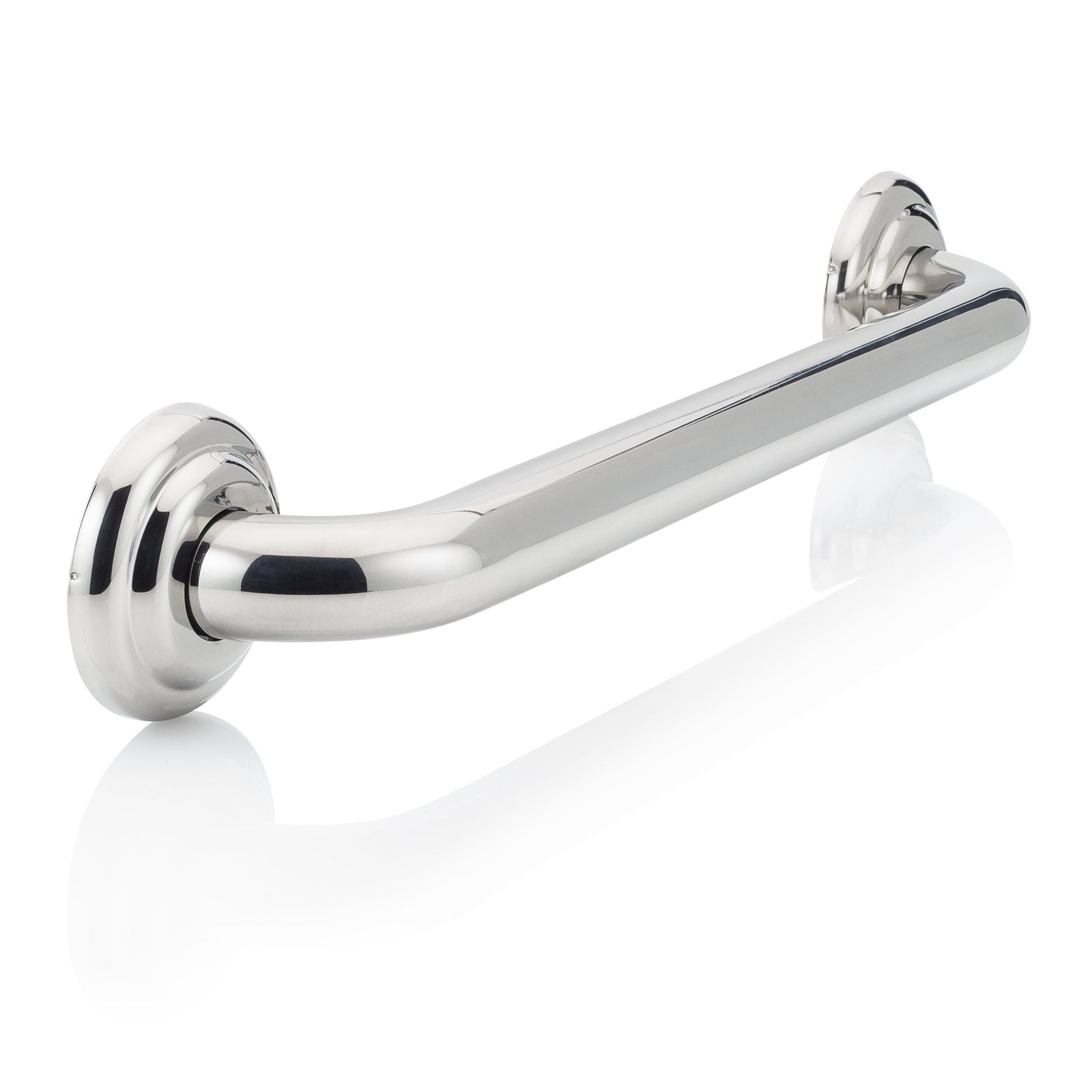
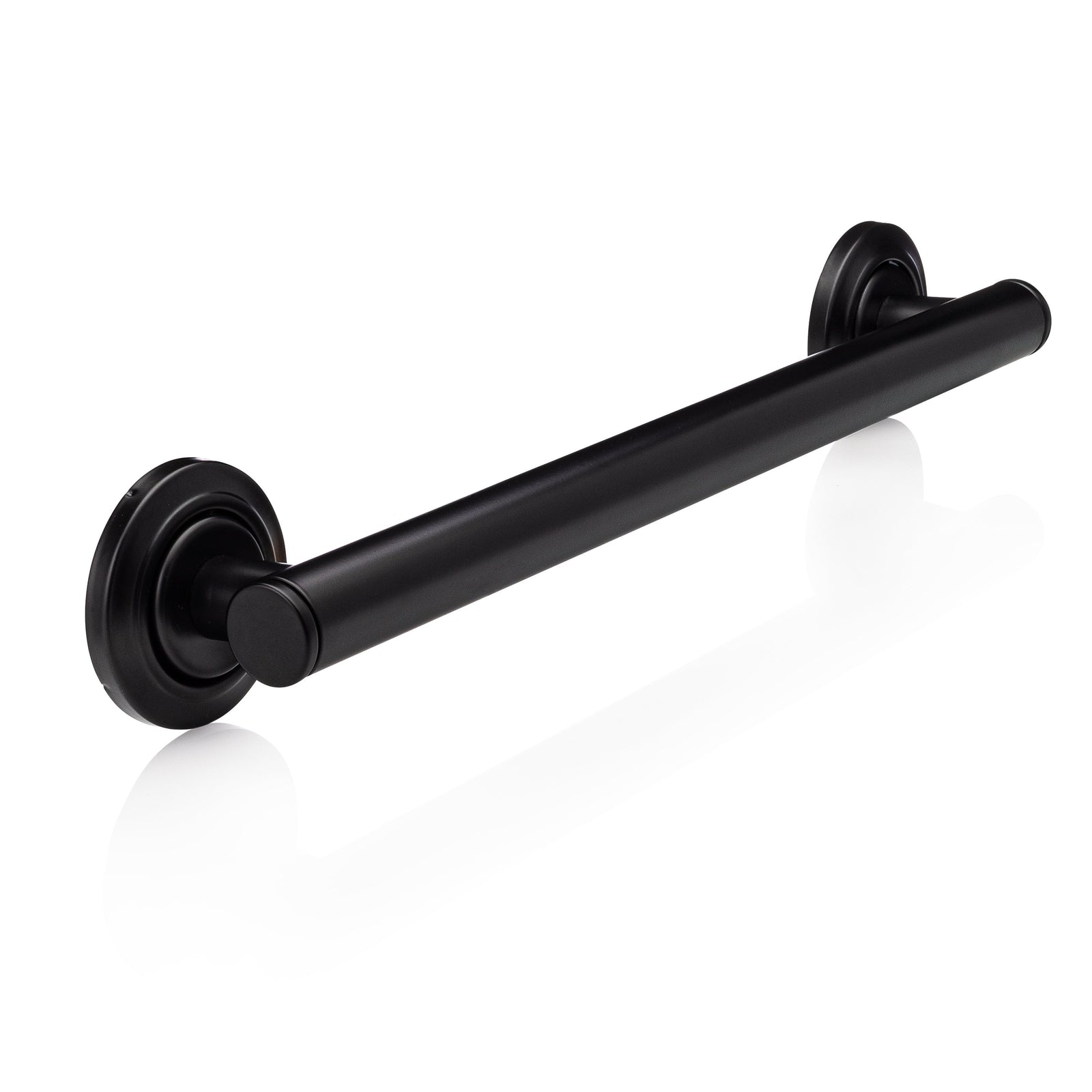
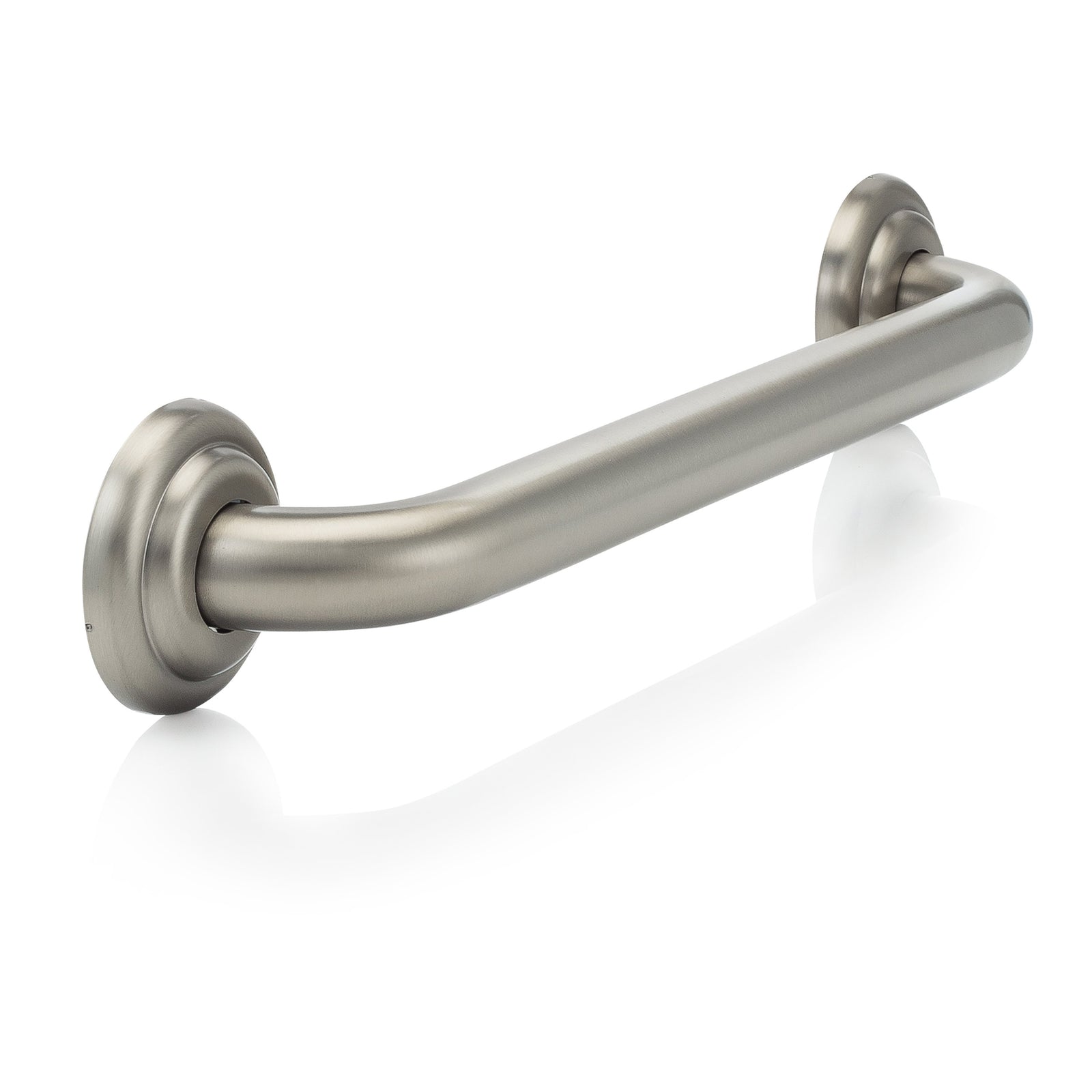
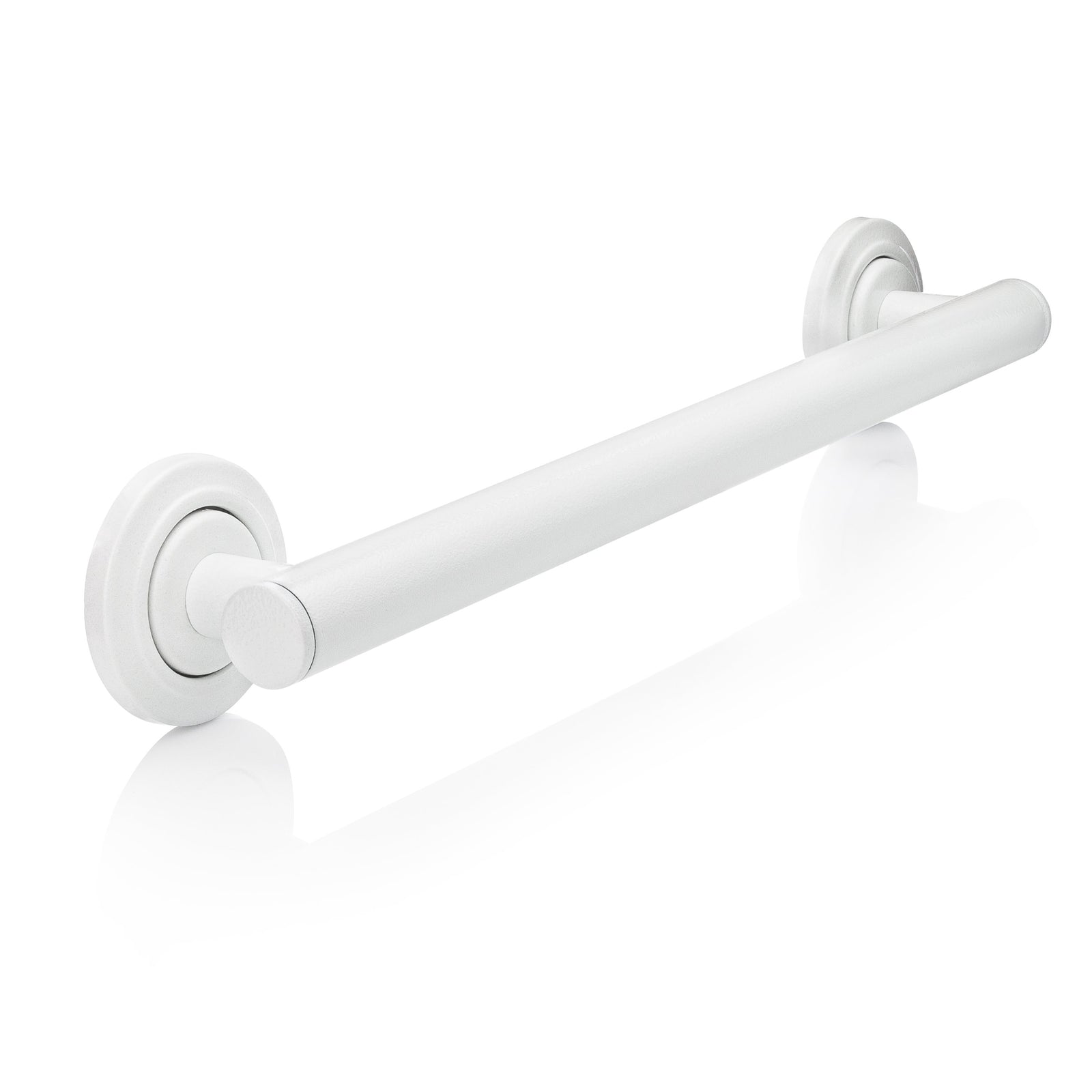
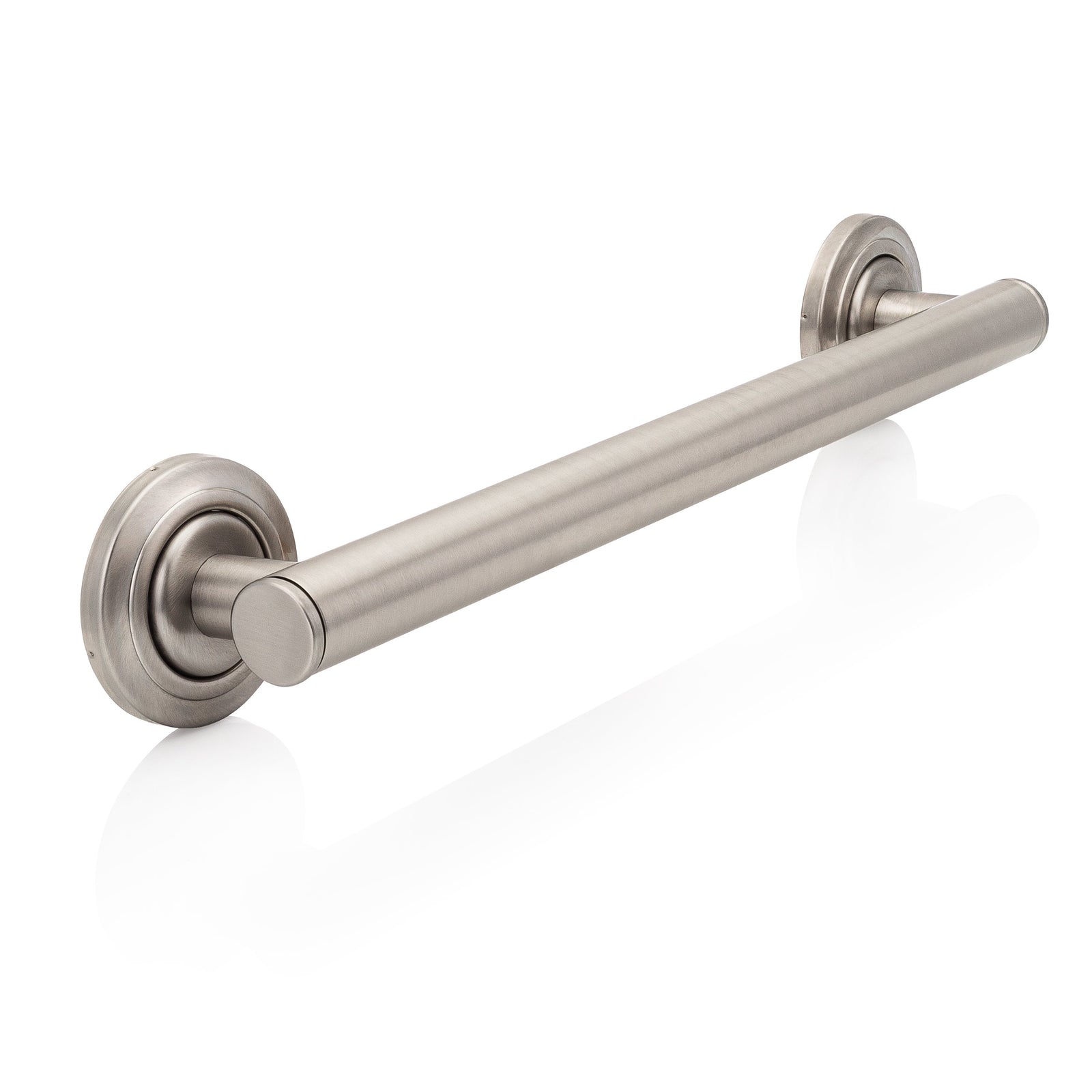
Peter Sereque
July 22, 2024
I still can’t quite determine what length grab bar to install on studs with standard spacing of 16". Is it a 16", 32" etc? Many bars are 18". I know that the mount is a rosette with 4 holes. I would like to use lag screws into the center of each stud. Please advise. Thank you.